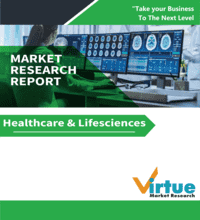Albinism Pigmentation Disorders Market Size (2025-2030)
The Global Albinism Pigmentation Disorders Market was valued at USD 280 million in 2024 and is projected to reach a market size of USD 350 million by the end of 2030. Over the forecast period of 2025-2030, the market is projected to grow at a CAGR of 4.56%.
The Albinism Pigmentation Disorder Market is a niche segment within the broader dermatology and rare disease treatment market, focusing on managing the genetic condition characterized by a lack of melanin production. Albinism affects the skin, hair, and eyes, leading to hypersensitivity to sunlight and vision impairments. The market is driven by rising awareness, advancements in dermatological treatments, and government initiatives supporting rare disease research. Key treatment approaches include sun protection, optical aids, and emerging gene therapies. While a relatively small market compared to other pigmentation disorders, it is steadily growing due to improving healthcare accessibility and rising investments in medical research.
Key Market Insights:
The Albinism Pigmentation Disorders market is witnessing increased awareness and need for treatment options, driven by a greater understanding of the condition and its impact on individuals. Research suggests that approximately 1 in 20,000 people globally are affected by albinism, with the condition being more prevalent in certain regions, such as sub-Saharan Africa. As awareness spreads, the demand for specialized treatments, including skin protection products and genetic therapies, is growing, with the market for albinism-related skincare solutions seeing a steady rise.
In terms of medical advancements, the use of gene therapy for albinism is showing promise, with several clinical trials currently underway to explore potential treatments. Around 15% of global patients suffering from albinism are exploring these advanced therapies, contributing to the market’s positive growth trajectory. Additionally, innovations in ophthalmic treatments to address vision-related issues caused by albinism are on the rise, with several new treatments being introduced to improve quality of life for patients.
The global push for inclusive skincare and dermatology products is another significant driver in the albinism pigmentation disorders market. The market for sun protection products tailored for albinism patients, such as high-SPF sunscreens, has increased by more than 25% over the past five years. This growing interest in protective skincare is supported by the growing number of dermatological centers and research institutions focusing on albinism and related pigmentation disorders, which further propels market expansion.
Albinism Pigmentation Disorders Market Drivers:
Growing Awareness and Advocacy Efforts Are Improving Healthcare Access
Rising awareness campaigns by global organizations, advocacy groups, and governments are driving better healthcare access for individuals with albinism. Educational initiatives, social media campaigns, and policy changes are improving early diagnosis, promoting sun protection, and encouraging the development of specialized healthcare services. As public understanding of albinism grows, there is a rising demand for targeted treatments, vision aids, and UV protection solutions, which is fueling market expansion.
Advancements in Dermatology and Ophthalmology Are Expanding Treatment Options
Continuous research and innovation in dermatology and ophthalmology are leading to improved solutions for managing albinism-related symptoms. Developments in melanin-boosting treatments, specialized sunscreens, and advanced eyewear are enhancing the quality of life for individuals with albinism. Gene therapy and regenerative medicine are also emerging as potential long-term solutions, with research institutions and pharmaceutical companies investing in novel therapies to address pigmentation and vision impairments more effectively.
Supportive Government Policies and Regulatory Approvals Are Encouraging Innovation
Government initiatives and regulatory support for rare disease treatment are playing a crucial role in fostering innovation within the albinism pigmentation disorder market. Many countries are offering incentives for pharmaceutical companies and researchers to develop treatments, such as fast-track approvals, funding programs, and tax benefits. These supportive policies are motivating companies to invest in developing specialized drugs, skincare products, and medical devices tailored to the demand of individuals with albinism.
Increasing Demand for Sun Protection and Vision Care Is Driving Product Growth
With heightened awareness about the risks associated with albinism, there is an growing demand for high-SPF sunscreens, UV-protective clothing, and ophthalmic solutions. More consumers are seeking medical-grade skincare products, prescription eyewear, and low-vision aids to manage the condition effectively. The growing availability of these products through online platforms and retail pharmacies is making it easier for individuals with albinism to access essential healthcare solutions, further driving market growth.
Albinism Pigmentation Disorders Market Restraints and Challenges:
Limited Treatment Options, High Costs, and Accessibility Issues Create Barriers
Despite ongoing advancements in research, the treatment landscape for albinism remains relatively limited, with no definitive cure available. Current treatments mainly focus on symptom management, such as sun protection and vision aids, rather than addressing the root cause of pigmentation deficiency. Moreover, the high cost of specialized care, including advanced sunscreens, corrective eyewear, and emerging genetic therapies, presents a significant financial burden, particularly for individuals in low-income or underserved regions. Accessibility to specialized healthcare providers and treatment facilities is also a key challenge, especially in developing countries where awareness and resources are limited. Additionally, societal stigma surrounding albinism often leads to discrimination, further hindering individuals from seeking appropriate care and support. These factors combined create a complex set of challenges that restrict the growth and potential of the albinism pigmentation disorder market.
Albinism Pigmentation Disorders Market Opportunities:
The albinism pigmentation disorder market presents significant opportunities through advancements in genetic research and biotechnology, which hold the potential to offer more effective, long-term treatments for pigmentation restoration and vision correction. Emerging therapies like gene editing and melanin-stimulating treatments are gaining attention, offering the possibility of groundbreaking solutions for individuals with albinism. Additionally, technological innovations in ophthalmic devices, UV protection clothing, and skincare products tailored specifically for albinism are creating new avenues for growth. As awareness increases and healthcare access improves globally, particularly in underserved regions, there is a rising demand for specialized treatments, medical devices, and protective products.
ALBINISM PIGMENTATION DISORDERS MARKET REPORT COVERAGE:
|
REPORT METRIC |
DETAILS |
|
Market Size Available |
2024 - 2030 |
|
Base Year |
2024 |
|
Forecast Period |
2025 - 2030 |
|
CAGR |
4.56% |
|
Segments Covered |
By Product Type, treatment type, end user, and Region |
|
Various Analyses Covered |
Global, Regional & Country Level Analysis, Segment-Level Analysis, DROC, PESTLE Analysis, Porter’s Five Forces Analysis, Competitive Landscape, Analyst Overview on Investment Opportunities |
|
Regional Scope |
North America, Europe, APAC, Latin America, Middle East & Africa |
|
Key Companies Profiled |
Johnson & Johnson, Novartis, AbbVie, L’Oréal |
Albinism Pigmentation Disorders Market Segmentation:
Albinism Pigmentation Disorders Market Segmentation: By Treatment Type:
- Medication
- Gene Therapy
- Sun Protection & Skincare
- Ophthalmic Treatments
Among the various treatment types for albinism pigmentation disorders, sun protection & skincare remains the dominant sub-segment, as managing skin sensitivity and preventing sun damage is a key concern for individuals with albinism. Due to the absence of melanin, those affected are highly vulnerable to sunburns and skin cancers, making high-SPF sunscreens, UV-protective clothing, and skincare products essential for daily protection. The widespread availability of these products, along with increasing awareness campaigns about sun safety, continues to drive significant demand, positioning this sub-segment as the leading treatment category in the market.
On the other hand, gene therapy is the fastest-growing sub-segment, driven by advancements in genetic research and biotechnology. Scientists are actively exploring innovative gene-editing techniques and melanin-boosting therapies aimed at addressing the root cause of albinism rather than just managing its symptoms. Although still in the experimental phase, gene therapy holds immense potential for transforming treatment approaches in the long run, attracting increased investment and research funding. With ongoing clinical trials and promising breakthroughs in genetic medicine, this segment is expected to experience rapid growth in the coming years.
Albinism Pigmentation Disorders Market Segmentation: By Product Type:
- Topical Treatments
- Oral Medications
- Medical Devices
- Surgical Treatments
Among the various product types, topical treatments hold the dominant position in the market, primarily because sun protection and skincare are essential for individuals with albinism. Due to their extreme sensitivity to sunlight and high risk of skin cancer, individuals with albinism require daily application of high-SPF sunscreens, moisturizers, and protective creams. The increasing availability of dermatologically tested and specialized formulations, along with rising awareness of sun safety, has cemented topical treatments as the most widely used and in-demand product category.
On the other hand, medical devices are the fastest-growing sub-segment, fueled by the increasing need for vision aids and assistive technologies. Since albinism significantly affects eyesight, the demand for specialized eyewear, low-vision aids, and contact lenses is rising rapidly. Innovations such as AI-powered visual assistance devices, high-precision lenses, and customized optical solutions are fueling market expansion. Additionally, greater accessibility to ophthalmic care and technological advancements in vision correction are accelerating growth in this segment, making it the most rapidly evolving area in albinism treatment.
Albinism Pigmentation Disorders Market Segmentation: By End-User:
- Hospitals & Clinics
- Dermatology Centers
- Pharmacies
- Research Institute & Academic Centers
Hospitals & clinics represent the dominant sub-segment in the market, as they serve as the primary point of care for individuals seeking treatment for albinism-related conditions. Since albinism affects both the skin and vision, hospitals and multispecialty clinics provide comprehensive care, including dermatological consultations, ophthalmic treatments, and genetic counseling. Patients often rely on these facilities for early diagnosis, ongoing medical management, and access to specialized healthcare professionals, making them the most remarkable contributors to the market.
Research institutes & academic centers are the fastest-growing sub-segment, fueled by increasing investments in genetic research and the development of innovative treatments for albinism. With advancements in gene therapy, regenerative medicine, and melanin-boosting solutions, academic institutions and research labs are at the forefront of discovering breakthrough therapies. Governments and private organizations are also providing increased funding for rare disease research, accelerating progress in clinical trials and experimental treatments, thereby fueling rapid growth in this segment.
Albinism Pigmentation Disorders Market Segmentation: Regional Analysis:
- North America
- Asia-Pacific
- Europe
- South America
- Middle East and Africa
North America holds the dominant position in the Albinism Pigmentation Disorders Market, contributing approximately 40% of the market share. The region's leadership can be attributed to its advanced healthcare infrastructure, widespread awareness of albinism-related issues, and the availability of specialized treatment options. With a high level of access to dermatological and ophthalmic care, North America continues to be the largest market for albinism treatments, driving the growth of UV protection products, skincare, and vision aids.
The Asia-Pacific region is the fastest-growing in the Albinism Pigmentation Disorders Market, with a projected growth rate of around 20% in market share. This rapid expansion is primarily driven by the increasing prevalence of pigmentation disorders, including albinism, and a growing demand for specialized treatments and protective products. Additionally, improving healthcare infrastructure, rising awareness, and the expanding availability of medical solutions in countries like India, China, and Japan are contributing significantly to the region's market growth.
COVID-19 Impact Analysis on the Global Albinism Pigmentation Disorders Market:
The COVID-19 pandemic had a mixed impact on the global Albinism Pigmentation Disorders Market. While healthcare resources were diverted towards managing the crisis, leading to delays in routine dermatological and ophthalmic treatments, the pandemic also heightened awareness about health and personal care, which positively influenced the demand for protective products like sunscreens and skincare items. Additionally, the rise in telemedicine services allowed patients to continue receiving consultations and prescriptions, albeit virtually. The disruption of international supply chains also led to temporary shortages of specialized medical devices and treatments in some regions.
Latest Trends/ Developments:
Recent trends in the Albinism Pigmentation Disorders Market highlight significant advancements in genetic research and treatment options. Researchers are increasingly exploring gene therapy and CRISPR technology as potential long-term solutions to address the root cause of albinism, particularly through strategies aimed at restoring melanin production in individuals with the condition.
Another major trend is the growing focus on improved dermatological and ophthalmic devices designed specifically for individuals with albinism. The demand for customized eyewear, low-vision aids, and UV-protective clothing is expanding as more people seek specialized products to mitigate vision and skin-related challenges associated with albinism. Technological advancements, such as AI-driven visual assistance tools and wearable devices for sun protection, are also gaining traction, offering enhanced functionality and convenience for individuals living with the condition. These trends are reshaping the market, focusing on more integrated and accessible solutions for people with albinism.
Key Players:
- Johnson & Johnson
- Novartis
- AbbVie
- L’Oréal
- GlaxoSmithKline
- F. Hoffmann-La Roche
- Mylan
- Sanofi
- Amgen
- Pfizer
Chapter 1. Albinism Pigmentation Disorders Market – SCOPE & METHODOLOGY
1.1. Market Segmentation
1.2. Scope, Assumptions & Limitations
1.3. Research Methodology
1.4. Primary Source
1.5. Secondary Source
Chapter 2. Albinism Pigmentation Disorders Market – EXECUTIVE SUMMARY
2.1. Market Size & Forecast – (2025 – 2030) ($M/$Bn)
2.2. Key Trends & Insights
2.2.1. Demand Side
2.2.2. Supply Side
2.3. Attractive Investment Propositions
2.4. COVID-19 Impact Analysis
Chapter 3. Albinism Pigmentation Disorders Market – COMPETITION SCENARIO
3.1. Market Share Analysis & Company Benchmarking
3.2. Competitive Strategy & Product Type Scenario
3.3. Competitive Pricing Analysis
3.4. Supplier-Distributor Analysis
Chapter 4. Albinism Pigmentation Disorders Market - ENTRY SCENARIO
4.1. Regulatory Scenario
4.2. Case Studies – Key Start-ups
4.3. Customer Analysis
4.4. PESTLE Analysis
4.5. Porters Five Force Model
4.5.1. Bargaining Power of Suppliers
4.5.2. Bargaining Powers of Customers
4.5.3. Threat of New Entrants
4.5.4. Rivalry among Existing Players
4.5.5. Threat of Substitutes Players
4.5.6. Threat of Substitutes
Chapter 5. Albinism Pigmentation Disorders Market - LANDSCAPE
5.1. Value Chain Analysis – Key Stakeholders Impact Analysis
5.2. Market Drivers
5.3. Market Restraints/Challenges
5.4. Market Opportunities
Chapter 6. Albinism Pigmentation Disorders Market – By Treatment Type
6.1 Introduction/Key Findings
6.2 Medication
6.3 Gene Therapy
6.4 Sun Protection & Skincare
6.5 Ophthalmic Treatments
6.6 Y-O-Y Growth trend Analysis By Treatment Type :
6.7 Absolute $ Opportunity Analysis By Treatment Type :, 2025-2030
Chapter 7. Albinism Pigmentation Disorders Market – By Product Type
7.1 Introduction/Key Findings
7.2 Topical Treatments
7.3 Oral Medications
7.4 Medical Devices
7.5 Surgical Treatments
7.6 Y-O-Y Growth trend Analysis By Product Type
7.7 Absolute $ Opportunity Analysis By Product Type , 2025-2030
Chapter 8. Albinism Pigmentation Disorders Market – By End User
8.1 Introduction/Key Findings
8.2 Hospitals & Clinics
8.3 Dermatology Centers
8.4 Pharmacies
8.5 Research Institute & Academic Centers
8.6 Y-O-Y Growth trend Analysis End User
8.7 Absolute $ Opportunity Analysis End User, 2025-2030
Chapter 9. Albinism Pigmentation Disorders Market, BY GEOGRAPHY – MARKET SIZE, FORECAST, TRENDS & INSIGHTS
9.1. North America
9.1.1. By Country
9.1.1.1. U.S.A.
9.1.1.2. Canada
9.1.1.3. Mexico
9.1.2. By Product Type
9.1.3. By End User
9.1.4. By Treatment Type
9.1.5. Countries & Segments - Market Attractiveness Analysis
9.2. Europe
9.2.1. By Country
9.2.1.1. U.K.
9.2.1.2. Germany
9.2.1.3. France
9.2.1.4. Italy
9.2.1.5. Spain
9.2.1.6. Rest of Europe
9.2.2. By Product Type
9.2.3. By End User
9.2.4. By Treatment Type
9.2.5. Countries & Segments - Market Attractiveness Analysis
9.3. Asia Pacific
9.3.1. By Country
9.3.1.1. China
9.3.1.2. Japan
9.3.1.3. South Korea
9.3.1.4. India
9.3.1.5. Australia & New Zealand
9.3.1.6. Rest of Asia-Pacific
9.3.2. By Product Type
9.3.3. By End User
9.3.4. By Treatment Type
9.3.5. Countries & Segments - Market Attractiveness Analysis
9.4. South America
9.4.1. By Country
9.4.1.1. Brazil
9.4.1.2. Argentina
9.4.1.3. Colombia
9.4.1.4. Chile
9.4.1.5. Rest of South America
9.4.2. By END USER
9.4.3. By Product Type
9.4.4. By Treatment Type
9.4.5. Countries & Segments - Market Attractiveness Analysis
9.5. Middle East & Africa
9.5.1. By Country
9.5.1.1. United Arab Emirates (UAE)
9.5.1.2. Saudi Arabia
9.5.1.3. Qatar
9.5.1.4. Israel
9.5.1.5. South Africa
9.5.1.6. Nigeria
9.5.1.7. Kenya
9.5.1.8. Egypt
9.5.1.9. Rest of MEA
9.5.2. By END USER
9.5.3. By Product Type
9.5.4. By Treatment Type
9.5.5. Countries & Segments - Market Attractiveness Analysis
Chapter 10. Albinism Pigmentation Disorders Market – Company Profiles – (Overview, Product Type Automation Portfolio, Financials, Strategies & Developments)
10.1 Johnson & Johnson
10.2 Novartis
10.3 AbbVie
10.4 L’Oréal
10.5 GlaxoSmithKline
10.6 F. Hoffmann-La Roche
10.7 Mylan
10.8 Sanofi
10.9 Amgen
10.10 Pfizer
Download Sample
Choose License Type
2500
4250
5250
6900
Frequently Asked Questions
The Global Albinism Pigmentation Disorders Market was valued at USD 280 million in 2024 and is projected to reach a market size of USD 350 million by the end of 2030. Over the forecast period of 2025-2030, the market is projected to grow at a CAGR of 4.56%.
The key drivers of the Global Albinism Pigmentation Disorders Market include advancements in genetic research, increasing awareness of albinism, and rising demand for specialized skincare and ophthalmic treatments
Based on Treatment Type, the Global Albinism Pigmentation Disorders Market is segmented into Medications, Gene Therapy, Sun Protection & Skincare, Ophthalmic Treatments.
North America is the most dominant region for the Global Albinism Pigmentation Disorders Market
Johnson & Johnson, Novartis, AbbVie, L’Oréal are the leading players in the Global Albinism Pigmentation Disorders Market.



